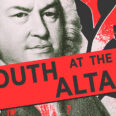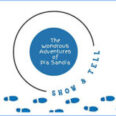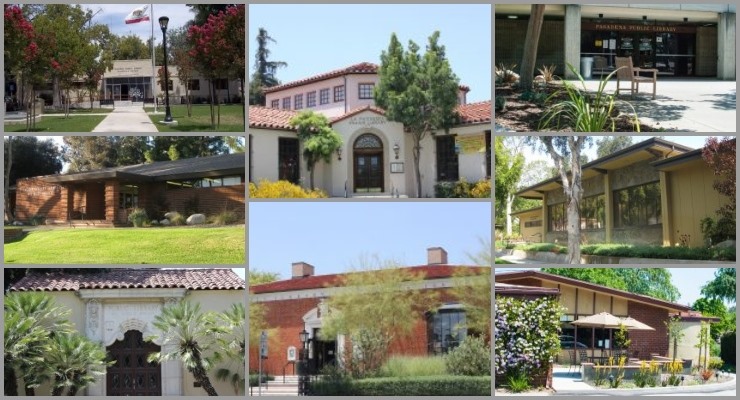 Pasadena Unified School District schools inched higher in Academic Performance Index (API) scores with an overall District-wide increase of three points, but only 38% met the government target of an 800 score in data released this morning by the California Dept. of Education.
Pasadena Unified School District schools inched higher in Academic Performance Index (API) scores with an overall District-wide increase of three points, but only 38% met the government target of an 800 score in data released this morning by the California Dept. of Education.
46% of PUSD schools saw either no change or a decline in their API scores.
Sierra Madre Elementary earned a 912 score to come in as the top ranked school in Pasadena Unified. The single highest-scoring school in Pasadena was Hamilton Elementary, with an API score of 901.
Elementary schools in PUSD fared best, with 11 out of the 19 meeting their score target.
Washington Accelerated Elementary recorded the highest score increase this year with a 49 percentage point increase to 810 from 761 the previous year.
The biggest drop came from Roosevelt Elementary which fell 56 percentage points to 832 from 888 in 2011. However, Roosevelt Elementary is still above the state’s 800 target.
All PUSD middle schools, including Aveson Global Leadership Academy, Charles W. Eliot Middle, Washington Middle, and Woodrow Wilson Middle, met their targets this year, although none of them was able to hit the 800 government target.
All the four PUSD high schools did not meet their API scores this year with three of them showing declines as Blair High dropped 13 points to 703 from 716, John Muir High fell 7 percentage points to 639 from 646, and Pasadena High retreated 8 percentage points to 749 from 757.
Marshall Fundamental improved a slight 1 percentage point to 764 from 763.
The results in PUSD reflect the positive improvement in the statewide API scores.
State Superintendent Tom Torlakson announced that for the first time a majority of California’s public schools met or surpassed the statewide target for academic achievement on the 2012 API.
Some 53 percent of schools scored at or above the state target of 800, an increase of 4 percentage points over last year, marking a decade of steady growth. Ten years ago, only 20 percent of schools met or surpassed the API target.
“We’ve set a high bar for schools and they have more than met the challenge, despite the enormous obstacles that years of budget cuts have put in their way,†Torlakson said. “The incredible efforts of teachers, administrators, school employees, parents, and students should serve as an inspiration to us all. While there’s still more work to do, California’s schools have earned a vote of confidence.â€
Results released by Torlakson show that state-wide 59 percent of elementary schools, 49 percent of middle schools, and 30 percent of high schools are now meeting the state benchmark.
The school level results reflect the continued improvement of students statewide. The overall California API score for all students increased by 10 points for 2012, to 788, with substantial gains among all student groups.
State-wide, African American students and students with disabilities realized the largest gains with an increase of 14 points for each student group, to 710 and 607, respectively.
Latino students and English Learners also posted strong gains, with Latinos adding 11 points to 740 and English Learners adding 10 points to 716. Asian and white students made smaller gains of 7 and 8 points respectively, but still have the highest API totals among student groups of 905 and 853 respectively.
California elementary schools API score grew by 7 points to 815, middle schools by 14 points to 792, and high schools by 11 points to 752.
Along with the annual API scores, Torlakson also unveiled the California Department of Education’s (CDE) new School Quality Snapshot, http://www.cde.ca.gov/snapshot/ a free, online accountability tool that puts a wide variety of academic results and other information about a school’s performance at the fingertips of parents and the public.
These reports—visual representations of data schools already reported to CDE—represent a first step in how the Department and the State Board of Education plan to use data to better inform the public about the progress of California schools as they reshape the School Accountability Report Card and revise the Academic Performance Index as required by Senate Bill 1458 (Darrell Steinberg, D-Sacramento).
And as required by federal law, CDE also released the results for the federal school accountability measures created under No Child Left Behind: Adequate Yearly Progress (AYP) and Program Improvement (PI).
“California’s request for a waiver from the requirements of NCLB is still pending,†Torlakson noted. “While we’re waiting for the flexibility we need, we’re not going to allow a flawed system to distract us from the work we’re doing to help schools improve.â€
All results can be found on the CDE Accountability Progress Reporting Web page.














 0 comments
0 comments


